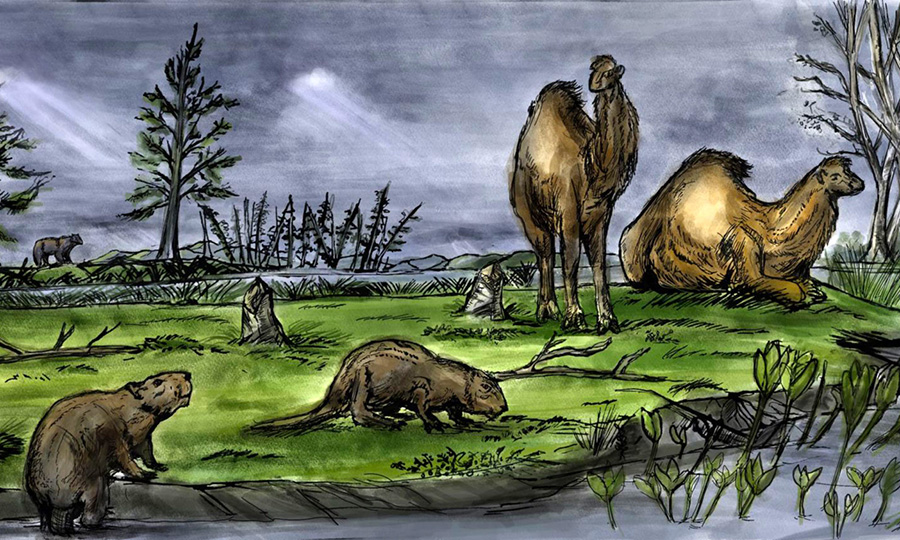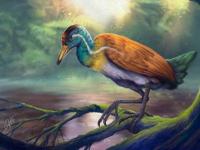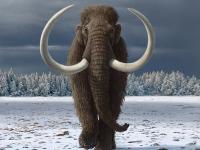Ancient Beavers Gnawed Trees for Harvesting Food, Not To Build Dams

Extinct semi-aquatic beavers of the genus Dipoides lived 4 million years ago (Pliocene epoch) in the Canadian High Arctic and were approximately two-thirds the size of today’s North American beavers (Castor canadensis). They gnawed trees with rounded front teeth, not squared teeth like their modern relatives. A team of paleontologists from Canada, the United States and the UK says their woodcutting behavior originated for harvesting food, not from a compulsion for building dams.
Modern beavers are prolific ecosystem engineers and dramatically alter the landscape. They harvest trees and shrubs for sustenance, particularly during the winter, but also for the purpose of lodge and dam building.
However, little is known about the evolutionary drivers of their woodcutting behavior.
“Ancient animals and ecosystems that thrived in the high Arctic during warmer times in geological history show us a glimpse of what this biome could look like in the future under the effects of global warming in polar regions,” said lead author Tessa Plint, a former Western University graduate student currently pursuing a PhD at Heriot-Watt University.
“Today, the beaver has a profound impact on the landscape and is known to increase the biodiversity of the local ecosystem through tree-harvesting and dam building. It’s fascinating to look back in time and figure out how this hyper-specialized toolkit of behaviors came to be.”
To reconstruct the paleodiet of ancient beavers, Plint and her colleagues from the University of Western Ontario, the University of Montana, Paleotec Services, Canadian Museum of Nature and Carleton University examined carbon and nitrogen isotope signatures preserved fossilized plants and Dipoides beaver bones from the Beaver Pond site on Ellesmere Island.
The results indicate a diet of woody and aquatic plants, supporting the hypothesis that these extinct beavers engaged in woodcutting behavior for feeding purposes.
According to the team, woodcutting and consumption of woody plants can be traced back to a small-bodied, semi-aquatic beaver from the Miocene epoch, suggesting that beavers have been consuming woody plants for over 20 million years.
The chemical signatures preserved in the Dipoides bones and plant remains also provided an excellent record of past ecological and climatic conditions.
“From these findings, we can begin to understand the potential impacts of current climate and environmental change on Earth, and anticipate — for example — who survives and who doesn’t,” said co-author Dr. Fred Longstaffe, a researcher in the Department of Earth Sciences at the University of Western Ontario.
“The more we unearth this time capsule from Ellesmere Island, the more we discover a boreal forest-type landscape,” added co-author Dr. Ashley Ballantyne, a bioclimatologist at the University of Montana.
“It is yet another glimpse into what the Arctic looked like during a much warmer time in Earth’s history.”
“This study highlights how beavers have been impacting forest and freshwater ecosystems for millions of years, and helps us understand the evolution of their role as ecosystem engineers,” Plint said.
The findings appear in the journal Scientific Reports.
_____
T. Plint et al. 2020. Evolution of woodcutting behaviour in Early Pliocene beaver driven by consumption of woody plants. Sci Rep 10, 13111; doi: 10.1038/s41598-020-70164-1
Source: www.sci-news.com/








